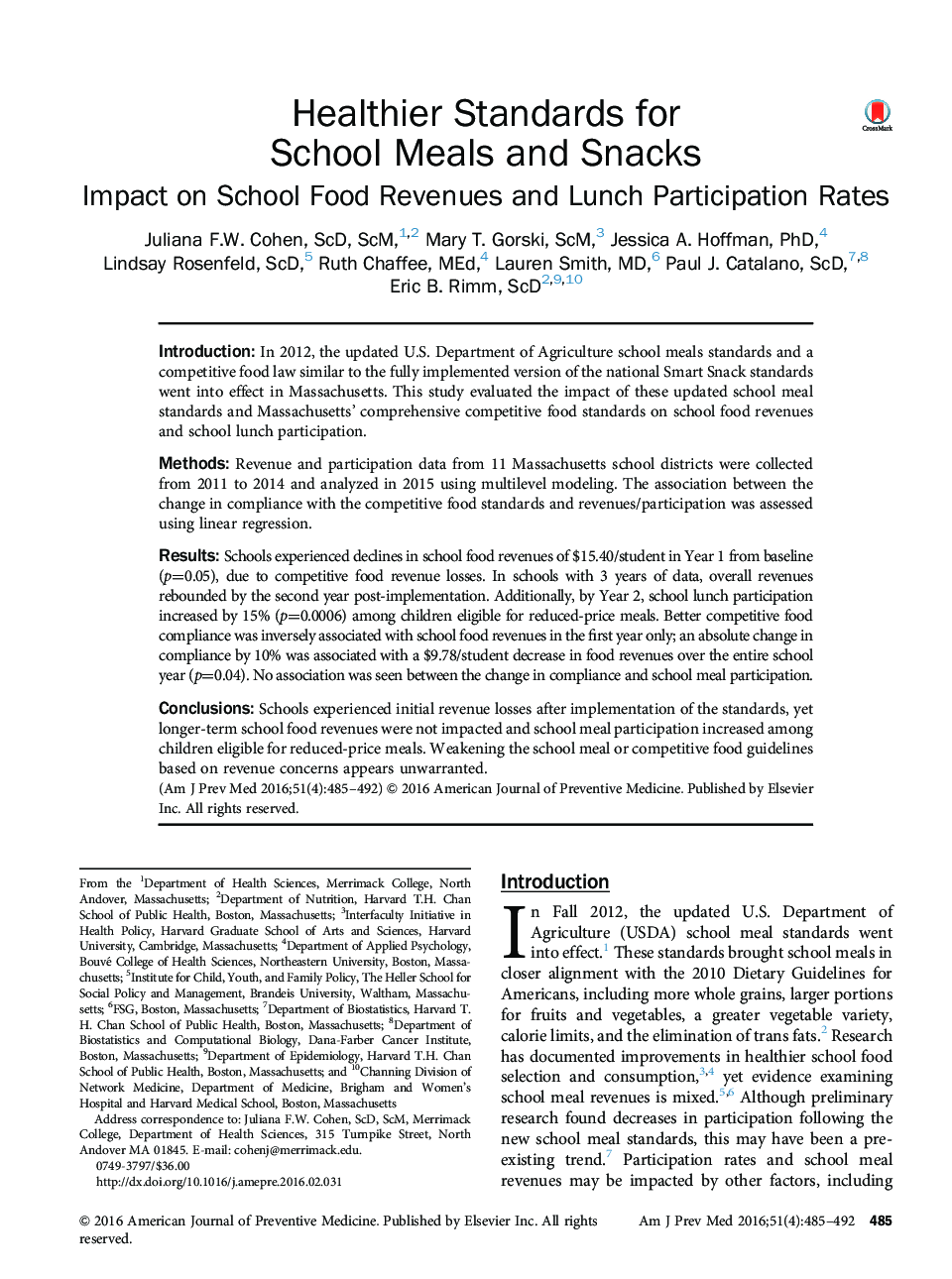| کد مقاله | کد نشریه | سال انتشار | مقاله انگلیسی | نسخه تمام متن |
|---|---|---|---|---|
| 4191843 | 1608616 | 2016 | 8 صفحه PDF | دانلود رایگان |
IntroductionIn 2012, the updated U.S. Department of Agriculture school meals standards and a competitive food law similar to the fully implemented version of the national Smart Snack standards went into effect in Massachusetts. This study evaluated the impact of these updated school meal standards and Massachusetts’ comprehensive competitive food standards on school food revenues and school lunch participation.MethodsRevenue and participation data from 11 Massachusetts school districts were collected from 2011 to 2014 and analyzed in 2015 using multilevel modeling. The association between the change in compliance with the competitive food standards and revenues/participation was assessed using linear regression.ResultsSchools experienced declines in school food revenues of $15.40/student in Year 1 from baseline (p=0.05), due to competitive food revenue losses. In schools with 3 years of data, overall revenues rebounded by the second year post-implementation. Additionally, by Year 2, school lunch participation increased by 15% (p=0.0006) among children eligible for reduced-price meals. Better competitive food compliance was inversely associated with school food revenues in the first year only; an absolute change in compliance by 10% was associated with a $9.78/student decrease in food revenues over the entire school year (p=0.04). No association was seen between the change in compliance and school meal participation.ConclusionsSchools experienced initial revenue losses after implementation of the standards, yet longer-term school food revenues were not impacted and school meal participation increased among children eligible for reduced-price meals. Weakening the school meal or competitive food guidelines based on revenue concerns appears unwarranted.
Journal: American Journal of Preventive Medicine - Volume 51, Issue 4, October 2016, Pages 485–492
